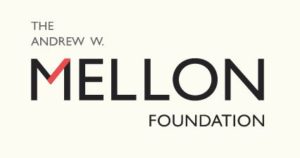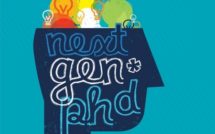
From Collaboration to Strategic Coordination: Creating LCTL Partnerships Across the Big 10 Academic Alliance

This is part of our special feature on Sustainability & Innovation.
At the Mellon Foundation, during a sponsored symposium on Course Sharing for Sustainable Programs at Columbia on April 14–15, 2017, it became clear that the next step for those of us working on sustainable models for language course sharing is to create a coordinated network of collaborations. As we consider how best to accomplish this, it is worth recalling the impetus behind the creation of the Committee on Institutional Cooperation (CIC), now known as the Big Ten Academic Alliance.
In December of 1956, the presidents of the Big Ten took the first steps to create an institution of inter-institutional cooperation. According to Herman B. Wells, then president of Indiana University, their intention was rooted in the recognition that:
Academic isolation has long been impractical; in today’s world, it is impossible. At a time when yesterday’s bright new fact becomes today’s doubt and tomorrow’s myth, no single institution has the resources in faculty or facilities to go it alone.
If academic isolation was impossible already in 1956, today, sixty-one years later, one might imagine that we would have mastered the art of inter-institutional collaboration. And yet, as each university seeks to articulate what differentiates it from its competitors, academic isolation persists.
Looking back, what strikes us as most remarkable about the decision the presidents of the Big Ten made in 1956, is that although collaboration was recognized as a matter of urgency, creating a structure for cooperation was not a response to a crisis, but rather, a strategic decision to advance the shared mission of the whole. Wells goes on to say:
A university must do more than just stand guard over the nation’s heritage, it must illuminate the present and help shape the future. This demands cooperation — not a diversity of weaknesses, but a union of strengths.
Wells insists here that cooperation is the very practice through which universities “illuminate the present and help shape the future.”[1]
Still, today, this is a visionary idea, for it cuts against prevailing patterns of competition that too often undermine the demands of cooperation. The Big Ten Academic Alliance has long sought to navigate between the demand of cooperation and the force of competition by affirming the autonomy of each institution to decide when, how, and if it will participate in the activities of the alliance. Because the Big Ten Academic Alliance attempts to cooperate across peer institutions that are quite similar, strategic cooperation depends on a shared educational mission to educate citizens with integrity and at scale.
The vision behind the Mellon Funded Big Ten Academic Alliance LCTL Partnership is to draw on this shared mission to establish strategic coordination across a variety of Less Commonly Taught Languages by leveraging leading-edge research and advances in proficiency-oriented instruction and assessment so that more students, across more institutions, achieve at least intermediate high proficiency in more LCTLs.
The Project
The three-year LCTL Partnership focuses on a coordinated development of hybrid models of LCTL instruction reflecting best practices in proficiency-oriented instruction and assessment. The project includes research in LCTL proficiency assessment, goal setting, curricular and technological innovations, as well as teacher education and professional development. Its goal is to help more students achieve higher levels of proficiency in the LCTLs identified as targets by the Big Ten Academic Alliance LCTL Partnership Advisory Committee.
This committee was established to ensure that all interested parties were included in the decision-making process, and that the partnership was guided by faculty with research expertise in language acquisition. Meeting twice a year, the Advisory Committee reflects on the progress of the project and is involved in the language selection process. Six of the fifteen Big Ten Academic Alliance institutions are represented in the Advisory Committee. Additionally, each year the LCTL Partnership reaches out to the Big Ten Academic Alliance LCTL community and beyond in a symposium jointly organized with the University of Chicago’s Mellon Foundation grant project “Transforming Language Instruction at the University of Chicago and Beyond: Collaborative Curricula and Professional Development.” This yearly symposium not only allows us to keep our partners informed about the progress of the project, but it also reiterates and strengthens our commitment toward strategic coordination across institutions.
Course development and delivery are shared across multiple universities. Specific materials will be developed in three languages: Focusing on Swahili in Year 1, Hindi in Year 2, and a third language (TBD) in Year 3. This takes place through a “working group” model in which representatives from at least three institutions collaborate to develop curricula supported by innovative pedagogies and proficiency assessment. The working groups are comprised of experts in instructional technology and curriculum/assessment and include a language specific coordinator for each of the three languages selected from one of the participating institutions, along with two additional language specific experts from the other participating institutions. These participating institutions are considered to be the “core partners” for that LCTL.
The LCTL Partnership aims to coordinate the relevant expertise and experiences across universities and other stakeholders or communities of language users (e.g., heritage speakers) to create a vibrant community of practice that will enrich language programs. A joint professional development program consisting of working group meetings and workshops for a larger audience has been established to support collaboration and promote innovation in all aspects of LCTL instruction.
Collaboration is also further extended to all interested parties within the Big Ten Academic Alliance by inviting them to join the Partnership as “affiliate partners.” Affiliate partners are invited to pilot materials, participate in the professional development workshops and contribute to the intentional community of practice by engaging in discussion on a protected-access working group blog. There, they can talk about broad ideas for the project, further develop specific materials and approaches, and deepen their relationships with one another and the scholarship they are pursuing together. By using this blog, we hope to accomplish one of the main goals of this project: Developing an infrastructure and process by which LCTL instructors can come together to pose questions, collaborate, and create.
Furthermore, the project sets an ambitious and coordinated research agenda. A program evaluation agenda will investigate the implementation of proficiency-based assessment practices to improve students’ overall proficiency and to inform teachers and students of the effectiveness of their language program. A language-specific agenda will be developed by participating faculty in the Partnership to advance research in LCTLs more generally.
Through the development of proficiency-based course materials, the professional development of language teachers, the creation of an intentional community of practice, and the research expertise in language proficiency and assessment, we aim to develop new, scalable LCTL pedagogies allowing for the pedagogical flexibility needed to respond effectively to the context of teaching for a given language.
Challenges and Opportunities
Although the LCTL Partnership was established in a spirit of cooperation, embarking on new collaborations between faculty and navigating diverse institutional cultures present challenges at all stages of such joint initiatives. For the LCTL Partnership, these challenges are complicated by the fact that the project is organized in ways that are both bottom-up and top-down. Bottom-up academic collaborations often arise when individual faculty members within and across universities share a common scholarly interest and jointly develop a project, often a research initiative, in which participants bring unique, but shared perspectives. Top-down collaborations come about when a person in authority generates an idea and others join in. The LCTL partnership has dimensions of both.
It is top-down in the sense that the opportunity to submit the grant emerged first in conversations among the Big Ten Academic Alliance Deans of Liberal Arts and Sciences in response to an invitation from the Mellon Foundations to consider how to advance our longstanding LCTL Course Share initiative. It is top-down, too, because the administrative leadership in the College of Arts & Letters at Michigan State University initiated and facilitated the submission of the proposal. On the other hand, it is bottom-up in the sense that faculty from across the Big Ten Academic Alliance who have academic interests and strengths that coincide with the goals of the grant are invited to participate by responding to a call for collaboration. Thus, faculty in each university are empowered to advocate for and establish the specific roles their university will play in the partnership. There are, of course, different roles a faculty member can play within the context of the grant. Some universities are core partners, others affiliate partners. Some universities provide a coordinator, others language specialists. Thus, relationships needed to be established from the outset and a modus operandi had to be determined. An intentional community of practice rather than one that arises organically is a challenge that has been present from the beginning, and it will evolve over the course of the project.
To begin cultivating a genuine culture of collaboration and partnership, we began by attempting to identify and connect with faculty colleagues with experience collaborating across institutions. Here we draw on the history of collaboration among the Big Ten Academic Alliance. Even so, although the Deans of the Big Ten Academic Alliance endorsed the project and helped to facilitate the identification of appropriate contact persons from participating institutions at the start of the project, it turned out to be a challenge to connect with the interested LCTL instructors and, once relationships were established, to help them through the administrative procedure of setting up an inter-institutional collaboration. The fact that financial remuneration was offered for course development helped convince both the LCTL instructors who often have a heavy teaching load, as well as the university to participate in the partnership.
Drafting sub-award agreements between the different offices for contracts and grants or sponsored programs turned out to be a challenge with respect to the intellectual property policies of all partners involved. Aiming to develop sustainable course materials, we chose to promote a Creative Commons license (an Attribution-NonCommercial license) that we believed could work within the scope of university policies. We wanted to give each university and instructor credit for their work, and prevent others who use the materials to benefit financially from the use or adaptation of the course materials. We also wanted to give teachers the assurance that they are acting within the law when they adapt and incorporate these course materials into their instruction. However, adopting this policy for all the instructors and course materials proved to be difficult seeing some of the source materials already carried publication restrictions.
In addition to these organizational hurdles, there were pedagogical challenges that needed to be addressed. One of the major pedagogical challenges is the ongoing discussion of what it means to create proficiency-based course materials. This discussion proved to be a balancing act between the aforementioned top-down and bottom-up collaboration. Whereas the differences in interpretations of what proficiency-based teaching exactly means were less significant between the instructional technology and curriculum/assessment experts, the difference in interpretations between the LCTL instructors were more substantive. Getting all partners on the same page turned out to be a challenge that was addressed during the working group meetings by inviting all partners to present their draft lesson materials and explicitly discuss and reflect on their teachers’ beliefs and pedagogical knowledge. Changing teaching approaches and the presumptions behind them has proven to be a long and winding road. Therefore, developing proficiency-based lesson materials and the associated teacher cognitions is a topic that will be addressed at every professional development opportunity.
These challenges, however, open new opportunities for research and scholarship as well as new ways of approaching pedagogical problems. From the onset, the project has sought to shape these challenges into opportunities by anchoring the initiative in the research strengths of the faculty across the Big Ten Academic Alliance.
Creating Cultures of Strategic Coordination
Creating a culture in which research is not only shared but genuinely collaborative, and even strategically coordinated, takes time and involves trust as well as a belief that different perspectives and contributions can enhance a project. It also requires that academic institutions place value on research that is a product of the work of multiple individuals. During the work of the first year of the project, team members, through the establishment of shared goals, have been able to reorient their perspectives on language teaching and learning. Questions associated with the best ways to incorporate study abroad preparation into the curriculum, how to create a proficiency-oriented curriculum, and how to assess proficiency have all been part of ongoing discussions as team members have come to a clearer understanding of processes of language learning and of how materials developed will enhance language learning outcomes. Team members have also reached out to other faculty members to see how their research agenda can be developed in collaboration with the project. However, these discussions must be actively and intentionally pursued if a rich culture of collaborative research is to take root and grow.
The atmosphere of competition that so often saturates relationships between colleagues and institutions can undermine the development of strategically coordinated research programs. In her opening keynote of the course sharing conference, Cristle Collins Judd, Senior Program Officer for Higher Education and Scholarship in the Humanities at the Mellon Foundation and incoming President of Sarah Lawrence College, emphasized that the tension between competition and collaboration has led the Foundation to fund more collaborative projects between asymmetrical institutions. Over the past twenty-five years of Mellon funding to support collaboration around language teaching and learning suggests that partnerships between asymmetrical institutions are often more effective. Partnerships between major research institutions and small liberal arts colleges, or between public universities and private institutions, or between community colleges and large universities, are often better able to collaborate in ways that advance their different strategic priorities.
Asymmetrical collaboration opens opportunities for strategic coordination in part because the forces of competition often complement efforts to coordinate. For example, the Mellon Foundation funded a collaboration between Bowdoin College and Yale to advance instruction in Russian language, literature, and culture, in which Bowdoin hosted Yale graduate students in Russian as post-docs in order to offer Bowdoin undergraduates more advanced courses in Russian. Here Yale graduate students are afforded employment opportunities that make them more competitive on a very tight job market, while Bowdoin is able to provide advanced courses to its students in a resource constrained context. Because Bowdoin, as a liberal arts college focused on undergraduate education, does not have a graduate program of its own, this partnership with Yale does not put it at odds with its own graduate educational mission. Here asymmetry facilitates strategic cooperation.
Wells and the other Presidents of the Big Ten Academic Alliance largely accepted the competitive nature of the academy by emphasizing that each institution could opt into or out of any initiative undertaken by the consortium. This recognizes the autonomy of each partner and the reality that they often find themselves competing for the same resources or faculty members. The pursuit of knowledge, however, requires us to move beyond competition to collaboration and strategic coordination based on a shared vision of the power of education and research to transform public life for the better.
If, as President Wells and his colleagues recognized already in 1956, higher education must “illuminate the present and help shape the future,” we must continue to nurture cultures of scholarly collaboration and strategic cooperation even as we work to dismantle the competitive boundaries that impede our attempts to develop a shared vision of a better future.

Susan Gass is University Distinguished Professor at Michigan State University, where she directs the English Language Center and the Second Language Studies Program and co-directs the Center for Language Teaching Advancement and the Center for Language Education and Research. She has published more than 30 books and nearly 150 articles in the fields of second language learning and second/foreign language teaching. She is the recipient of many local, national, and international awards, and has served as President of the American Association for Applied Linguistics and of the International Association of Applied Linguistics.
Koen Van Gorp is Head of Foreign Language Assessment at the Center for Language Teaching Advancement (CeLTA) at Michigan State University. He is also the Curriculum and Assessment Director of the LCTL Partnership, a three-year multi-university project to improve the teaching of less commonly taught languages (LCTL). Until 2015, he was Associate Director of the Center for Language and Education and Director of the Certificate Dutch as a Foreign Language at the University of Leuven (Belgium). His research interests include task-based language teaching and assessment, and multilingual education.
Christopher P. Long is Professor of Philosophy and Dean of the College of Arts & Letters at Michigan State University. His extensive publications in Ancient Greek and Contemporary Continental Philosophy include four books: The Ethics of Ontology: Rethinking an Aristotelian Legacy (SUNY 2004), Aristotle On the Nature of Truth (Cambridge 2010), an enhanced digital book entitled, Socratic and Platonic Political Philosophy: Practicing a Politics of Reading (Cambridge 2014) and Reiner Schürmann and the Poetics of Politics (forthcoming, Punctum Books).To learn more about his scholarly and administrative work, visit www.cplong.org.
Photo: Big Ten Academic Alliance
References:
[1] Herman B. Wells, “A Case Study on Interinstitutional Cooperation,” Educational Record, accessed April 11, 2017, http://www.btaa.org/docs/default-source/news-pub/historyofcic.pdf?sfvrsn=0.
Published on June 6, 2017.




